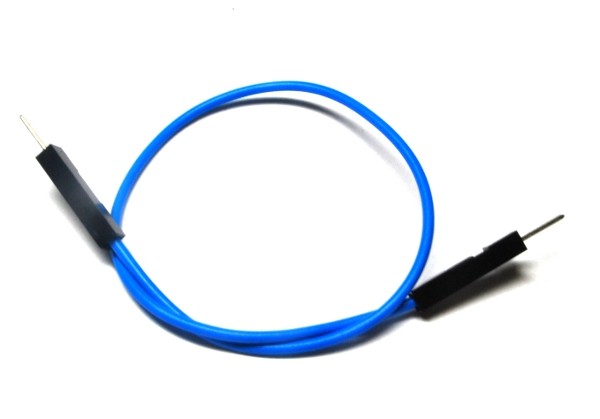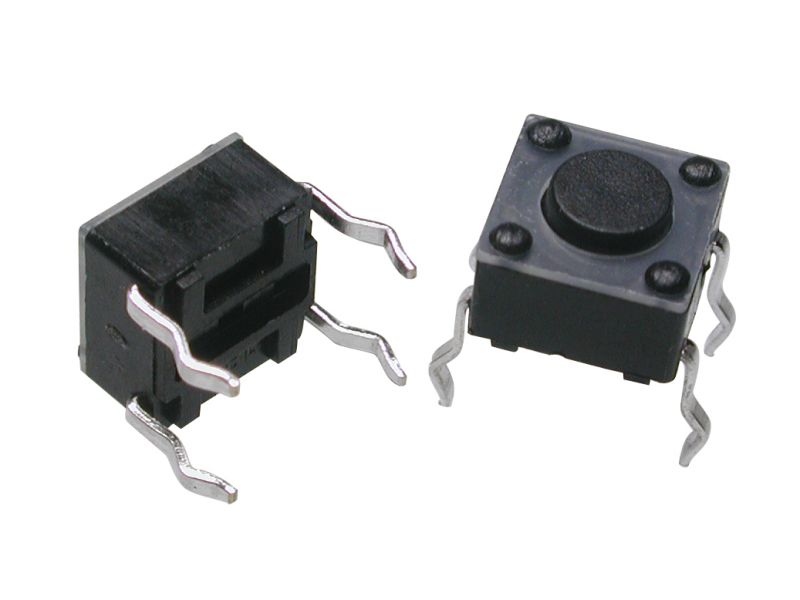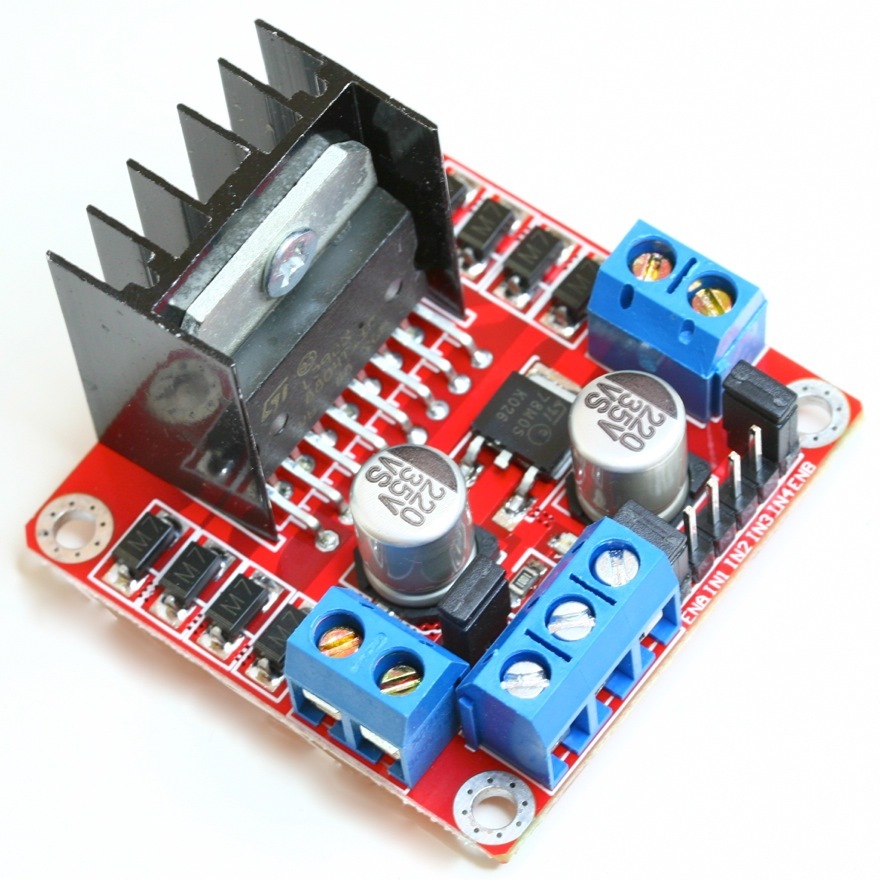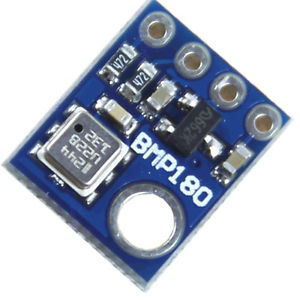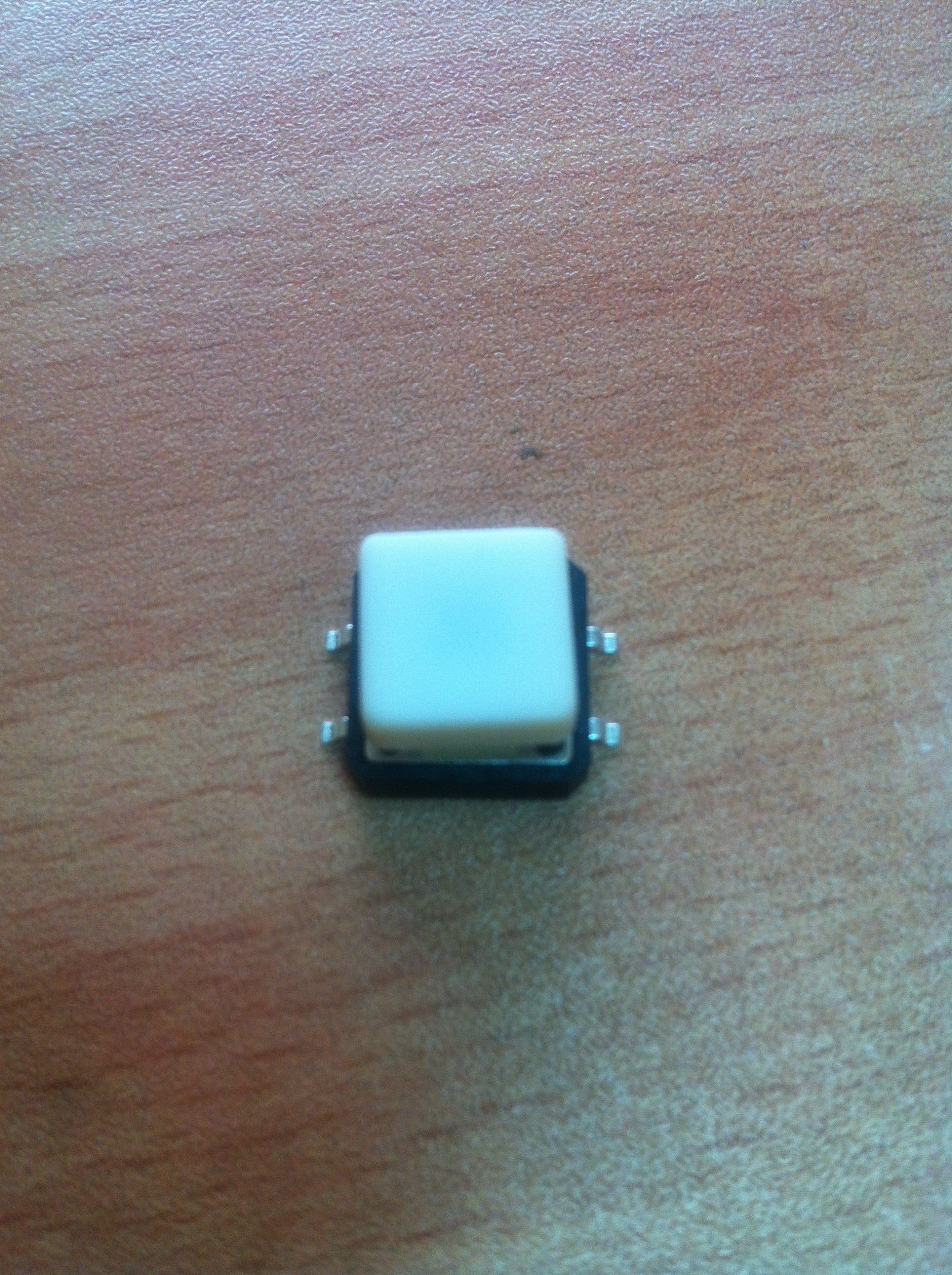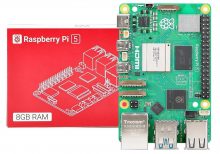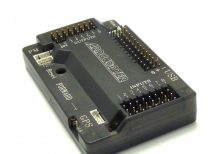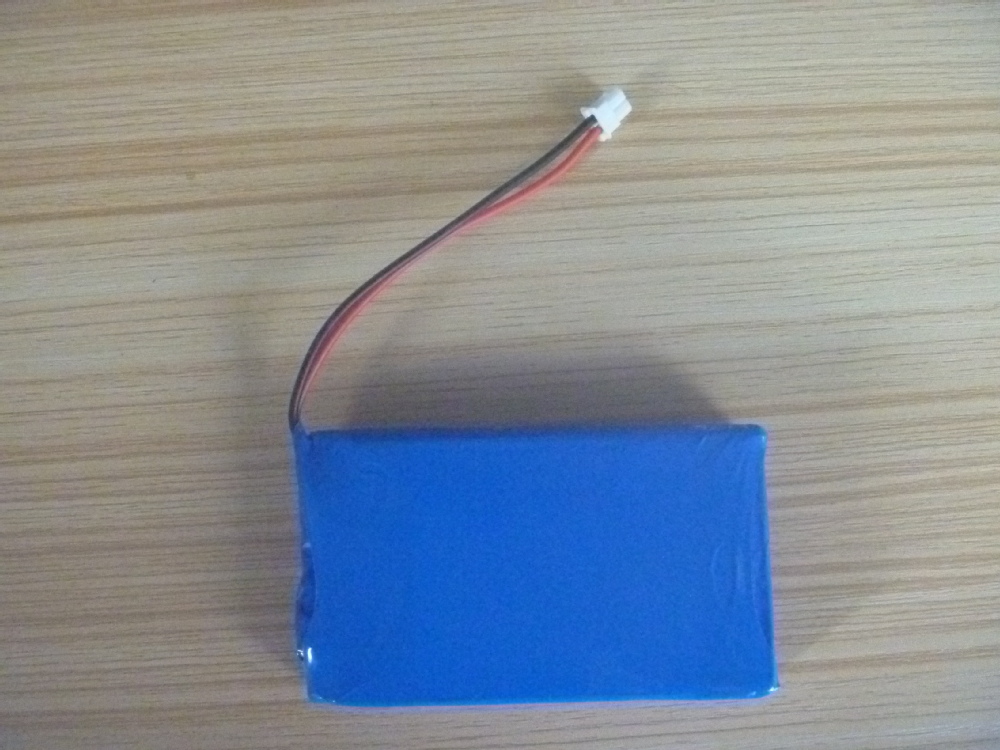|
Description |
A single male-male jumper wire features male connectors on both ends and is used for making connections between components, breadboards, and other circuit boards. These wires are essential in prototyping and development for creating temporary circuits or testing designs. They allow for easy and flexible connections without the need for soldering.
Key Features:
- Connectors: Male connectors on both ends
- Wire Type: Flexible, insulated wire for easy handling and routing
- Length: Available in various lengths to suit different project needs
- Color-Coded: Available in multiple colors for easy identification and organization
- Durability: Made from high-quality materials for reliable and repeated use
- Compatibility: Suitable for standard 2.54mm (0.1 inch) pitch headers and connectors
Technical Specifications:
- Connector Type: Male-to-male
- Wire Gauge: Typically 28 AWG
- Insulation Material: PVC or similar flexible plastic
- Pitch: 2.54mm (0.1 inch)
- Length Options: Common lengths include 10cm, 20cm, 30cm, and others
- Operating Temperature: Typically -40°C to +80°C
- Current Rating: Usually up to 1A
Applications:
- Prototyping: Ideal for making connections on breadboards and development boards.
- Educational Projects: Used in educational settings to teach electronics and programming concepts.
- DIY Electronics: Suitable for hobbyists and makers working on various electronics projects and experiments.
- Temporary Connections: Useful for creating temporary connections during development and testing.
- Interfacing Components: Facilitates connections between components and modules with male pin headers.
|
A Tact Switch, also known as a tactile switch, is a type of switch designed to provide a tactile feedback when pressed. These switches are commonly used in electronic devices for user input, such as in keyboards, remote controls, and various consumer electronics. Tact switches are known for their compact size, reliability, and ease of integration into circuits.
Key Features:
- Tactile Feedback: Provides a satisfying click feel when pressed.
- Compact Size: Small and suitable for space-constrained applications.
- Reliability: Durable and designed for a high number of actuation cycles.
- Variety of Sizes: Available in different sizes and heights to fit various designs.
- Easy Mounting: Can be mounted on PCBs with through-hole or surface-mount technology.
- Wide Application Range: Suitable for a variety of electronic devices and applications.
Technical Specifications:
- Contact Rating: Typically 50mA, 12V DC
- Contact Resistance: ≤ 100mΩ
- Insulation Resistance: ≥ 100MΩ at 100V DC
- Dielectric Strength: 250V AC for 1 minute
- Operating Force: Typically 160gf (varies by model)
- Travel: Typically 0.25mm to 0.5mm
- Operating Life: Typically 100,000 to 1,000,000 cycles
- Operating Temperature Range: -20°C to +70°C
Applications:
- Consumer Electronics: Used in remote controls, calculators, and gaming controllers.
- Computer Peripherals: Keyboards, mice, and other input devices.
- Home Appliances: Control panels for microwaves, washing machines, and other appliances.
- Automotive: Control buttons on car dashboards and steering wheels.
- Industrial Equipment: Control panels and user interfaces for machinery.
- DIY Projects: Suitable for custom electronic projects and prototypes.
Usage:
- Mounting: Solder the tact switch onto a PCB, ensuring correct alignment of the pins.
- Wiring: Connect the switch to your circuit, typically using pull-up or pull-down resistors.
- Testing: Verify the switch functionality by pressing it and checking the response in your circuit.
- Integration: Integrate the switch into your final product, ensuring it is accessible and functions as intended.
Caution:
- Debouncing: Implement debouncing in your software to ensure accurate readings.
- Proper Soldering: Avoid excessive heat during soldering to prevent damage to the switch.
- Environmental Conditions: Ensure the switch is used within its specified temperature and humidity range.
Datasheet:
For detailed technical specifications, refer to the Tact Switch Datasheet.
|
The L298N Dual H Bridge DC Stepper Motor Driver is a robust and versatile module used for controlling DC and stepper motors in various electronic projects. This driver module can control the speed and direction of two DC motors or a single stepper motor, making it ideal for robotics, automation, and other motor control applications. It features an onboard 5V regulator and can handle high currents, ensuring reliable operation in demanding environments.
Key Features:
- Motor Control: Dual H Bridge for controlling two DC motors or one stepper motor
- Voltage Range: Supports motor voltage from 5V to 35V
- Current Handling: Each bridge can handle up to 2A
- Onboard 5V Regulator: Provides 5V output for powering external circuits
- Control Pins: Enable and direction control for each motor
- Protection: Built-in thermal shutdown and overcurrent protection
- Compact Design: Easy to integrate into various projects
Technical Specifications:
- Motor Voltage: 5V to 35V
- Current Handling: 2A per bridge (peak 3A)
- Logic Voltage: 5V
- Control Inputs: 4 (IN1, IN2, IN3, IN4) for direction control
- Enable Pins: 2 (EN1, EN2) for enabling the motors
- Output Voltage: 5V (when using onboard regulator)
- Dimensions: 43mm x 43mm x 27mm
Applications:
- Robotics: Control of DC motors and stepper motors in robots.
- Automation: Use in automated systems for precise motor control.
- DIY Projects: Ideal for hobbyists and makers building motorized projects.
- Industrial Control: Suitable for controlling motors in industrial equipment.
- Educational Kits: Commonly used in learning modules for motor control.
Usage:
- Power Supply: Connect the motor power supply to the VCC and GND terminals, ensuring it is within the specified voltage range.
- Motor Connection: Connect the DC motors or stepper motor to the output terminals (OUT1, OUT2, OUT3, OUT4).
- Control Inputs: Use the control pins (IN1, IN2, IN3, IN4) to set the direction of the motors. The enable pins (EN1, EN2) can be used to enable or disable the motors.
- Logic Power: If using the onboard 5V regulator, connect the 5V and GND pins to your microcontroller or control circuit.
- Programming: Write code to control the motor speed and direction using PWM signals and logic inputs.
Caution:
- Heat Dissipation: The module can get hot during operation. Use a heat sink or cooling fan if necessary.
- Voltage and Current Limits: Do not exceed the specified voltage and current ratings to prevent damage.
Datasheet:
For detailed technical specifications, refer to the L298N Dual H Bridge DC Stepper Motor Driver Datasheet.
|
The BMP180 is a high-precision digital barometer and altitude sensor from Bosch, designed to measure atmospheric pressure and temperature. It is commonly used in applications requiring accurate altitude measurement and weather monitoring. The BMP180 provides reliable data for various applications including GPS, weather stations, and altitude tracking in wearable devices.
Key Features:
- Accurate barometric pressure and temperature measurement
- Digital interface with I²C or SPI communication
- High resolution with 0.03 hPa pressure measurement accuracy
- Compact and low-power design
- Built-in calibration for precise readings
- Wide operating temperature range
Technical Specifications:
- Sensor Type: Barometric Pressure and Temperature Sensor
- Communication Protocol: I²C (default), SPI (optional)
- Pressure Range: 300 hPa to 1100 hPa
- Pressure Accuracy: ±1 hPa (typical)
- Temperature Range: -40°C to +85°C
- Temperature Accuracy: ±1°C
- Resolution: 0.03 hPa for pressure
- Operating Voltage: 1.8V to 3.6V
- Current Consumption: 3µA (typical in sleep mode), 10µA (typical in measurement mode)
- Package Type: LGA-8 (Leadless Grid Array)
Applications:
- Altitude and weather tracking
- GPS altitude calibration
- Pressure-based data logging
- Environmental monitoring
- Wearable devices and consumer electronics
Usage:
- Connect the BMP180 sensor to your microcontroller or development board using I²C or SPI interface.
- Power the sensor with a voltage within the operating range (1.8V to 3.6V).
- Use the appropriate library or driver for the I²C or SPI protocol to interface with the sensor.
- Retrieve and process pressure and temperature data according to your application needs.
Caution:
- Ensure proper voltage supply to avoid damage to the sensor.
- Handle the sensor carefully to prevent mechanical damage or contamination.
- Verify correct wiring and communication protocol settings for accurate readings.
Datasheet:
For detailed technical specifications, refer to the BMP180 Datasheet.
|
The Inductive Metal Sensor SNO4 is a high-precision sensor designed for detecting the presence of metallic objects through electromagnetic induction. This sensor is ideal for applications in automation and industrial processes where non-contact metal detection is required. It is robust, reliable, and suitable for use in various environments, making it a popular choice for industrial and engineering applications.
Key Features:
- Detection Method: Electromagnetic induction
- Sensing Range: Typically 4 mm for metal objects
- Output Type: NPN or PNP (depending on model)
- Operating Voltage: 10-30V DC
- Response Time: Fast response for accurate detection
- Durability: Designed for industrial environments
- Housing Material: Usually metal or high-quality plastic
Technical Specifications:
- Dimensions:
- Sensor Diameter: 12 mm
- Length: 40 mm
- Weight: Approximately 20 g
- Operating Voltage: 10-30V DC
- Detection Range: Up to 4 mm (for iron)
- Output Type:
- NPN: Normally open or normally closed
- PNP: Normally open or normally closed
- Response Time: <1 ms
- Operating Temperature Range: -25°C to +75°C
- Cable Length: 1.5 meters (typically, varies by supplier)
- Connector Type: Cable or connector (depends on model)
Applications:
- Automation: Used in automated systems for detecting the presence or absence of metal objects.
- Manufacturing: Ideal for quality control and detection of metal parts on production lines.
- Robotics: Helps in obstacle detection and metal part positioning in robotic systems.
- Safety Systems: Integrated into safety systems to ensure proper operation and prevent collisions.
- Industrial Processes: Used in various industrial processes for metal detection and monitoring.
Datasheet:
For detailed technical information, refer to the Inductive Metal Sensor SNO4 Datasheet.
|
The SMD (Surface-Mount Device) tact switch with cap is a compact, reliable switch used in various electronic devices and applications. The switch is mounted directly onto a printed circuit board (PCB) and is designed to be activated by pressing the cap. The cap provides a user-friendly interface and helps in guiding the pressing action.
Key Features:
- Type: SMD Tactile Switch
- With Cap: Includes a cap for easy pressing and improved tactile feedback
- Mounting Type: Surface-mount for easy PCB integration
- Actuation Force: Typically designed for low actuation force
- Switch Function: Momentary contact (normally open; closes when pressed)
- Durability: Designed for many cycles of operation
Technical Specifications:
- Package Type: SMD (Surface-Mount Device)
- Cap Type: Plastic or rubber cap for tactile feedback
- Actuation Force: Typically ranges from 100g to 500g (varies by model)
- Contact Rating: Generally rated for 50mA to 100mA at 12V (varies by model)
- Contact Resistance: Typically 100Ω or less
- Insulation Resistance: Typically 100MΩ or more
- Life Cycle: Rated for up to 1,000,000 cycles
- Operating Temperature Range: -20°C to +85°C
Applications:
- Consumer Electronics: Used in devices like remote controls, calculators, and handheld devices
- Industrial Equipment: Integrated into control panels and user interfaces
- Automotive: Utilized in dashboards and control systems
- Medical Devices: Employed in compact medical equipment and interfaces
Usage:
- PCB Mounting: Solder the SMD tact switch to the designated pads on the PCB.
- Cap Placement: Ensure the cap is securely placed on the switch for proper operation and tactile feedback.
- Testing: Test the switch to ensure it functions correctly and provides the desired tactile response.
- Integration: Integrate the switch into the final assembly and connect it to the necessary circuits or components.
Caution:
- Handling: Handle with care to avoid damaging the switch or cap.
- Soldering: Follow proper soldering techniques to avoid overheating or damaging the switch.
- Compatibility: Ensure the switch is compatible with the design requirements and PCB layout.
Datasheet:
For detailed technical specifications and mounting guidelines, refer to the manufacturer’s datasheet for the specific SMD tact switch model.
|
This 4V 400mAh rechargeable battery is designed for a variety of low-power applications, offering reliable and consistent performance. Ideal for use in small electronic devices, portable gadgets, and backup power solutions, this battery provides efficient energy storage and long-lasting power.
Key Features:
- High Capacity: 400mAh for extended usage
- Rechargeable: Supports multiple charge cycles
- Stable Voltage: Consistent 4V output
- Durable Construction: Designed for reliable performance
- Environmentally Friendly: Reduces waste through reusability
Technical Specifications:
- Battery Type: Rechargeable
- Voltage: 4V
- Capacity: 400mAh
- Operating Temperature: -20°C to +60°C
- Storage Temperature: -20°C to +60°C
Applications:
- Small electronic devices
- Portable gadgets
- Backup power solutions
Usage:
- Connect the battery to a compatible charger.
- Ensure the charger settings match the battery specifications.
- Charge the battery until it reaches full capacity.
- Disconnect the battery from the charger and use it in your device.
- Recharge as needed to maintain performance.
Caution:
- Do not overcharge or over-discharge the battery.
- Avoid puncturing or crushing the battery.
- Store in a cool, dry place away from direct sunlight and heat sources.
- Use only with compatible devices and chargers.
|
The Raspberry Pi 5 (8GB RAM) is the latest iteration in the Raspberry Pi series, featuring significant performance improvements and expanded memory to handle more demanding applications. With a powerful quad-core processor, enhanced GPU, and versatile connectivity options, this compact single-board computer is ideal for a wide range of projects and applications.
Key Features:
- 8GB RAM: Ample memory for complex tasks and multitasking
- Quad-Core Processor: Enhanced processing power for improved performance
- Enhanced GPU: Supports 4K video output and better graphics performance
- Multiple Connectivity Options: USB 3.0 ports, Gigabit Ethernet, Bluetooth 5.0, and Wi-Fi
- Expandable Storage: MicroSD card slot and USB boot capability
- GPIO Pins: 40-pin GPIO header for hardware projects
Technical Specifications:
- Processor: Quad-core ARM Cortex-A72, 1.8GHz
- Memory: 8GB LPDDR4 RAM
- Graphics: Broadcom VideoCore VI, supports dual 4K displays
- Storage: MicroSD card slot, USB boot support
- Connectivity:
- 2 x USB 3.0 ports
- 2 x USB 2.0 ports
- Gigabit Ethernet
- Dual-band 2.4/5.0 GHz IEEE 802.11ac wireless
- Bluetooth 5.0
- Video Output: 2 x micro HDMI ports (supports up to 4K resolution)
- Audio Output: 3.5mm audio jack, HDMI
- Power Supply: 5V/3A USB-C power input
- GPIO: 40-pin GPIO header
- Operating System: Compatible with Raspberry Pi OS and various Linux distributions
Applications:
- Home automation
- Media centers and streaming devices
- IoT projects
- Educational tools for learning programming and electronics
- Personal computing and office tasks
- Robotics and AI projects
Usage:
- Insert a pre-loaded microSD card with the operating system into the microSD card slot.
- Connect peripherals such as a keyboard, mouse, and monitor.
- Plug in the power supply to the USB-C power input.
- Set up and configure your Raspberry Pi 5 as needed.
Caution:
- Use a high-quality power supply to ensure stable operation.
- Handle the board with care to avoid static damage to components.
Datasheet:
For more detailed technical information, refer to the Raspberry Pi 5 (8GB RAM) Datasheet.
|
The APM 2.8 Multicopter Flight Controller is an advanced autopilot system that enhances the capabilities of drones and multicopters. It is an upgraded version of the APM 2.5 and 2.6, featuring a built-in compass and the option to use an external compass via a jumper. This flight controller is ideal for both FPV RC drones and other autonomous vehicles, including multi-rotors, cars, and boats. It is a highly reliable system that has won the prestigious Outback Challenge UAV competition.
Key Features:
- Built-in compass and optional external compass for enhanced navigation
- Onboard 4 MegaByte Dataflash chip for automatic data logging
- Compatible with uBlox LEA-6H GPS module with Compass
- Uses Invensense’s 6 DoF Accelerometer/Gyro MPU-6000
- Upgraded barometric pressure sensor MS5611-01BA03
- Atmel’s ATMEGA2560 for processing and ATMEGA32U-2 for USB functions
- Arduino compatible for easy integration and customization
Technical Specifications:
- Controller Type: APM 2.8
- Built-in Compass: Yes, with jumper option for external compass
- Data Logging: 4 MegaByte Dataflash chip
- GPS Module Compatibility: uBlox LEA-6H (optional)
- Sensors: Invensense MPU-6000 (Accelerometer/Gyro), MS5611-01BA03 (Barometric Pressure)
- Processing Chips: ATMEGA2560 (processing), ATMEGA32U-2 (USB functions)
- Speed At Rated Load: 8.4 in/min
- Voltage: 12 V DC
- Shape: Rectangular
- Humidity Range: 10-95%
Applications:
- Multi-copters and drones
- Autonomous vehicles (cars, boats)
- FPV RC drones
- GPS mission planning and waypoint navigation
Usage:
- Connect the APM 2.8 Flight Controller to your vehicle’s power supply and motors.
- Attach the optional GPS module and configure the built-in compass settings.
- Use Mission Planner software or a compatible ground control station for setup and calibration.
- Perform data logging and adjust settings as needed for your specific application.
Caution:
- Ensure proper calibration of the compass and other sensors before flight.
- Avoid exposure to extreme humidity and ensure the controller is kept within the specified environmental conditions.
- Follow all safety guidelines for UAV operation and comply with local regulations.
|
The 7.4V 2000mAh LiPo battery is designed to provide reliable and efficient power for a range of electronic devices. Its compact size and lightweight construction make it suitable for use in remote control vehicles, drones, and other portable electronics.
Key Features:
- High Capacity: 2000mAh for extended usage
- Lightweight and Compact: Easy to integrate into various devices
- High Discharge Rate: Suitable for high-performance applications
- Stable Voltage: Consistent 7.4V output
- Rechargeable: Long lifespan with multiple charge cycles
Technical Specifications:
- Battery Type: Lithium Polymer (LiPo)
- Voltage: 7.4V
- Capacity: 2000mAh
- Operating Temperature: -20°C to +60°C
- Storage Temperature: -20°C to +60°C
Applications: Remote control vehicles, drones, portable electronic devices
Usage:
- Connect the battery to a compatible LiPo charger.
- Ensure the charger settings match the battery specifications.
- Charge the battery until it reaches full capacity.
- Disconnect the battery from the charger and use it in your device.
- Recharge as needed to maintain performance.
Caution:
- Do not overcharge or over-discharge the battery.
- Avoid puncturing or crushing the battery.
- Store in a cool, dry place away from direct sunlight and heat sources.
- Use only with compatible devices and chargers.
|
